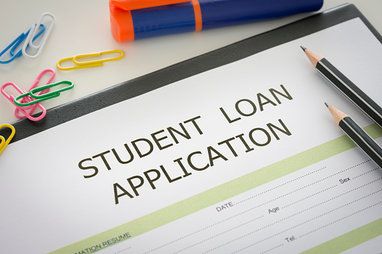If you're heading off to school, odds are you're doing it with financial assistance. The federal government offers a maximum of $31,000 in loans to all dependent undergrads pursuing a four-year degree, and a maximum of $57,500 to independent undergrads. The problem is that federal loans have strict limits. Many dependent freshmen, for example, can only borrow $5,500 to cover their first year, while the average price of attendance per year is $9,650, not including room and board, which can more than double the cost. Private or "alternative" loans are designed to fill the monetary gaps, but unlike federal loans, which are standardized, interest rates and repayment terms vary significantly between lenders. Here's how to start finding the best deal you can on student loans.
Ask Uncle Sam
An overwhelming number of students take out private loans every year, yet many don't have to. According to the Project on Student Debt, 19 percent of private loan borrowers went straight to a private lender without tapping federal loans first. “That's a costly mistake,” says Mary Johnson, director of financial literacy and student aid policy for Higher One, a company that provides financial services for college campuses, interviewed by the author, March 2014.
"Private loans are usually more expensive than federal loans," Johnson says. "Interest rates on private loans are typically variable, meaning they can change with the market [and] private loans often have additional fees."
Contrary to federal loans, private loans often require borrowers to pass a credit check and many require a co-signer, meaning that a friend or family member will be on the hook if you can't pay your loan, Johnson adds.
Private loans should only be an option after maxing out federal loans, says Nick Valdivia, director of financial aid at California State University, Long Beach, interviewed by the author, March 2014. Before taking out a student loan, Valdivia recommends that students have a firm understanding of how much they'll need to borrow and whether there's anything they can do to reduce that amount.
"We encourage [students] to evaluate their expenses," Valdivia says. "Do you really need to spend this much on new clothes that you want to buy throughout the year? Can you live with a roommate to reduce your rent costs? ... When you're a student and if you have to borrow, if you can cut back costs, it means you can borrow less."
Compare apples to apples
Once you've got a budget and borrowing amount in mind, start shopping around. Private loans vary when it comes to cost and terms, so it pays to compare loans carefully.
"[Students shopping for private loans] need to compare interest rates, repayment terms," says Jodi Okun, founder of the College Financial Aid Advisors consulting firm and a brand ambassador for Discover student loans. "They need to understand whether the loan [interest] is going to accrue while they go to school ... and what's the grace period going to be."
It's also crucial to examine the total lifetime cost of each loan, says Mary Johnson, which can be tricky for loans with variable interest rates that could fluctuate throughout the repayment period.
"The most important things families need to understand before signing on for a private loan with a variable interest rate are how the interest rate is calculated, how often it can change and if there is an interest rate cap," she says.
There are also fees associated with federal loans. Direct federal loans cap their fees at 1.07 percent for undergraduate students, and 4.29 percent on loans for graduate and professional degree students, but private lenders set their own rates and may charge disbursement, insurance, origination, deferment, repayment or miscellaneous fees, according to the New York Higher Education Services Corporation.
Once you have an idea of the interest, borrowing amount, fees and repayment period, comparing costs is easy. Student loan calculators, which are widely available, are a quick and easy way to do a ballpark comparison. Organizations that offer student loan calculators include:
If you need additional assistance in figuring out loan costs, many schools have financial aid offices that will assist students in this process.
Evaluate borrower protections
Costs aren't the only factor to consider. Students also need to understand their options if they can't make payments. If a borrower runs into financial problems, the federal government is ready. All federal loans come with certain borrower protections like the ability to postpone payments during periods of hardship and graduated repayment plans to lower monthly payments. Private loans aren't legally required to offer those borrower protections, though many lenders do offer similar programs, and unlike credit card debt, it's extremely difficult to discharge student loans through bankruptcy.
Before borrowing from a private lender, it's vital to understand what happens if you become unemployed, disabled, or can't afford payments, says Valdivia. You'll also want to ask about whether the lender offers release policies for co-signers and what happens if you leave school without graduating.
"Even if [students] don't finish their education, they're still going to be required to pay," says Jodi Okun.
Sources:
- Average Published Undergraduate Charges by Sector, 2016-2017, CollegeBoard Trends in Higher Education, https://trends.collegeboard.org/college-pricing/figures-tables/average-published-undergraduate-charges-sector-2016-17, accessed August 2017
- Private Loans: Facts and Trends, the institute for college access & success, http://ticas.org/sites/default/files/pub_files/private_loan_facts_trends.pdf, accessed August 2017
- Federal Student loan amounts and terms for loans issued in 2017-18, https://ticas.org/sites/default/files/pub_files/loan_terms_2017-18.pdf; accessed August 2017
- All interviews were done by the author in March, 2014
